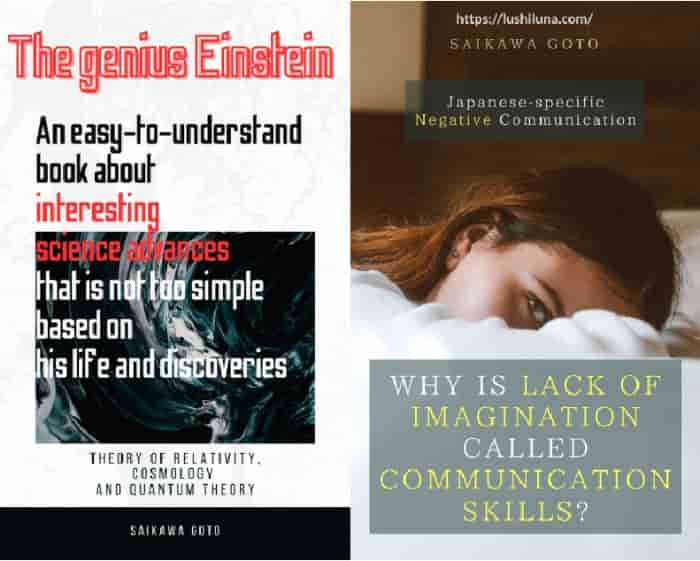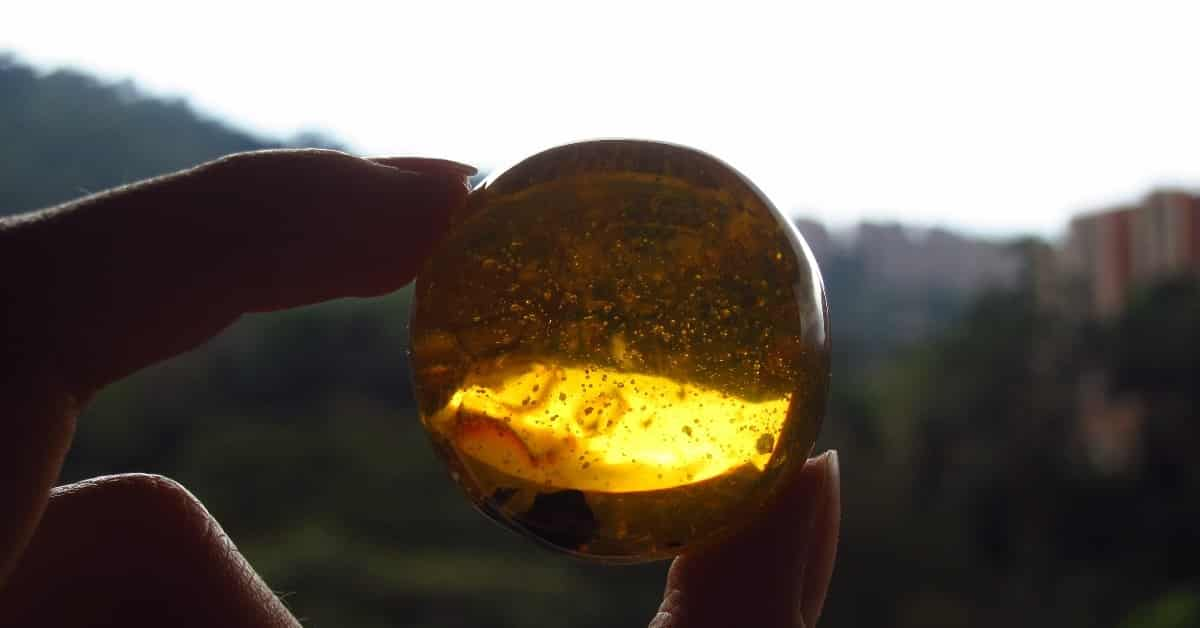I wrote this article in Japanese and translated it into English using ChatGPT. I also used ChatGPT to create the English article title. I did my best to correct any translation mistakes, but please let me know if you find any errors. By the way, I did not use ChatGPT when writing the Japanese article. The entire article was written from scratch by me, Saikawa Goto.
Introduction
Movies and books covered in this article
Three takeaways from this article
- I learned about the field of “molecular biology of fossils” for the first time by reading this book.
- The movie “Jurassic Park” was a story that even excited professional researchers.
- Most of the reasons for the failures in “molecular biology of fossils” and the importance of “failure’ in science.”
Self-introduction article


Published Kindle books(Free on Kindle Unlimited)
“The genius Einstein: An easy-to-understand book about interesting science advances that is not too simple based on his life and discoveries: Theory of Relativity, Cosmology and Quantum Theory”
“Why is “lack of imagination” called “communication skills”?: Japanese-specific”negative” communication”
The quotes in the article were translated using ChatGPT from Japanese books, and are not direct quotes from the foreign language original books, even if they exist.
A Beginner’s Guide to Explaining the Field of “Molecular Biology of Fossils,” Which May Not be Familiar or Easy to Imagine
You may have some idea about “molecular biology.” While traditional “biology” was limited to observations of animals, “molecular biology” uses chemical techniques to study the ecology of organisms on a deeper level. This field is useful for determining the evolutionary rate of molecules and inferring the branching points of biological evolution, thus revealing the process of biological evolution.

On the other hand, when we talk about “fossils,” we are referring to things like dinosaurs and ammonites that are familiar to us. The image of research in this field is centered around “observation,” and it’s hard to imagine conducting chemical analysis when we can’t even collect “molecules” from the “fossils” that have been unearthed after a long time.

Therefore, it may be difficult to imagine what “molecular biology of fossils” is all about. This book explains in an easy-to-understand way about this unfamiliar academic field.
To make it easier to understand “molecular biology of fossils,” let’s start by introducing it from that famous movie.

The Movie “Jurassic Park” Starts with “Molecular Biology of Fossils”
I’m not sure if I’ve watched the movie “Jurassic Park” all the way through, but I know the setting that sets off the story.
“Jurassic Park” is a story about reviving extinct dinosaurs. But to do that, they need to obtain DNA containing the genetic information of the dinosaurs. But where on earth can they find something like that? In the movie, there is a “fossilized amber with a trapped mosquito” that appears. And from the blood of the dinosaur that the mosquito sucked, they obtained the DNA and used biotechnology to revive the dinosaur.

This is exactly the most easily imaginable example of “molecular biology of fossils.”
While Jurassic Park is a work of fiction, when the original novel was published, it became a hot topic among specialist researchers. At the time of the novel’s release in 1990, only six years had passed since the study of ancient DNA had begun, but papers were already being published that were catching the attention of researchers. At that time, the oldest ancient DNA discovered was from a sloth 13,000 years ago, but new ancient DNA was extracted from a magnolia plant fossil 20 million years old.
Furthermore, in the year before Jurassic Park was released, ancient DNA was extracted from termites inside amber fossils, just like in the movie’s plot. Research was progressing that was just like following the story, and the world of Jurassic Park was not just a fantasy.

By the way, according to Wikipedia, it was announced in 2012 that DNA can only be obtained up to about one million years ago, considering the half-life of DNA. Even if ancient DNA of dinosaurs that lived 65 million years ago was found, it would not be possible to revive dinosaurs using it. It seems that it is difficult to achieve the development seen in the movie.

As for this book, various interesting topics such as “The Mystery of the Death of Louis XV,” “Mitochondrial Eve,” and “Molecular Clocks” are covered. Among them, the most interesting question is probably about “ourselves,” which is “Why is there only one species of humans?”
I written about this in an article in the book “Sapiens,” so please read it.

In this book, it is written that “research on ancient DNA often fails.” This is because there are problems unique to ancient DNA.
The point is that “ancient DNA is never preserved in a complete state.”
One of the hurdles is the fact that the DNA contained in fossils is mostly contaminated by external sources. Most of the genes in Neanderthal fossils, for example, are not Neanderthal DNA.
Even in fossils that are in relatively good condition, more than 90% of the extracted DNA is likely to be from other organisms. On average, more than 99% of the remaining DNA in fossils is DNA from other organisms that contaminated it.
The book describes it this way. It can be imagined that it is a very difficult situation. The image is that of 100 lots, 99 of them are “lose” and only one is a “win”, and you have to get a “win” in the situation.

Another big problem is how to determine if it is a “win”.
If you are studying existing living organisms, you can simply compare the found DNA to determine its authenticity. However, it’s not that simple for “ancient DNA that is believed to be from extinct plants and animals”. For example, although many fossils of dinosaurs have been discovered, there have been very few cases where ancient DNA has been found. In other words, it is very difficult to “determine that the ancient DNA is from a dinosaur”.

In this book, past research that was a “rush to judgment” is also mentioned. For example, a mummy study in Egypt published in the academic journal “Nature” in 1985, which was a world-renowned authority, is now believed to be a “mistake.” Of course, there is always the possibility of “incorrect papers” being published in any field, but I think this episode also shows how difficult the “molecular biology of fossils” can be.

The Structure of This Book, Which Also Covers “Failures”
It’s natural to want to focus on “success” when talking about something, not just in books about science but in general. Stories about failures can be interesting, but it’s the stories about “how they succeeded” that really excite us.
However, the author writes like this:
I didn’t want to make this book only about success stories that worked out well. People who come to love science through such books will likely drift away from science when they learn about its hardships and uncertainties. I wanted to convey the activities of science as fairly as possible.
I think this is a very sincere stance. By the way, it may be a completely different story, but I don’t trust people who “can’t see the bad parts” very much. Of course, there may be people in the world who are like “100% pure good people,” but I think that number is close to zero. That’s why I feel more reassured when I can see the “bad parts.”

Science has both positive and negative aspects. However, if we only convey the positive aspects of science and increase the number of people who blindly believe in science, wouldn’t it actually distance people from science? Would it not hinder the attitude of truly getting familiar with science?
Scientific endeavors are not as precise as mathematics. We cannot always obtain 100% correct results. Rather, it’s closer to the image of a big river that twists and turns left and right while leisurely approaching the truth. In that river flow, people may make mistakes, even conscientious scientists. Despite all of that, I believe that science is a wonderful asset for humanity.

For some reason, the word “science” is often used to mean something like “absolutely correct.” When we hear “scientifically proven,” many people might feel that it is “100% correct.” However, it is not necessarily true. Unlike mathematics, “scientifically proven” does not always mean “100% correct.”

The author also wrote this about the “molecular biology of fossils” study.
In reality, determining the base sequence of ancient DNA is difficult and failures are more common than successes. Most studies end in failure, and only a few successful cases are published as papers, making it seem like everything is always successful.
It may be true for any reality, but it’s important to realize that “focusing only on success doesn’t give you the full picture.” Behind every successful study, there is a vast amount of research that did not work, and these must be included in “science.
In science, it’s possible to conduct studies to scientifically verify the causes of failures. And sometimes, new insights are born from those studies. That’s why failure doesn’t just end as a “mere failure.”

For example, earlier I talked about how “contamination with other DNA” was one of the reasons for the failure of “molecular biology of fossils,” but there is research being done to investigate this point. It has been found that the phenomenon called “racemization” is involved in determining “whether external DNA is mixed in” and “whether DNA can be amplified”. This is a clear example of “failure leading to new discoveries.”
Without studies that have bravely attempted but failed, detailed knowledge of the phenomenon of “racemization” may not have been obtained, and without progress in the study of “racemization,” there may have been no advancement in “molecular biology of fossils.” In this way, science is interesting when it is understood, including “failure.” This book is also an interesting work that clearly takes such a stance.

Conclusion
I found the story of “molecular biology of fossils,” which I had never heard of before reading this book, to be very interesting. I realized that DNA research has the power to make an impact not only in the fields of medicine and biology, but also in archaeology and history, which excites me with the unexpected possibilities. This book also touches on the importance of “failure” through an unfamiliar field, making it an intriguing read.

Published Kindle books(Free on Kindle Unlimited)
“The genius Einstein: An easy-to-understand book about interesting science advances that is not too simple based on his life and discoveries: Theory of Relativity, Cosmology and Quantum Theory”
“Why is “lack of imagination” called “communication skills”?: Japanese-specific”negative” communication”








コメント